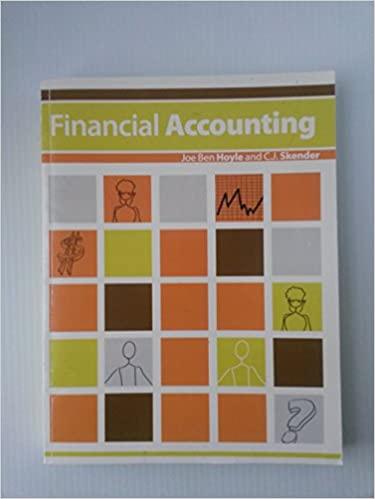Question
Sorrentino Company Sorrentino Company, which has been in business for one year, manufactures specialty Italian pastas. The pasta products start in the mixing department, where
Sorrentino Company
Sorrentino Company, which has been in business for one year, manufactures specialty Italian pastas. The pasta products start in the mixing department, where durum flour, eggs, and water are mixed to form dough. The dough is kneaded, rolled flat, and cut into fettucine or lasagna noodles, then dried and packaged.
Paul Gilchrist, controller for Sorrentino Company, is concerned because the company has yet to make a profit. Sales were slow in the first quarter but really picked up by the end of the year. Over the course of the year, 718,200 boxes were sold. Paul is interested in determining how many boxes must be sold to break even. He has begun to determine relevant fixed and variable costs and has accumulated the following per unit data:
Price $0.90
Direct materials 0.35
Direct labor 0.25
He has had more difficulty separating overhead into fixed and variable components. In examining overhead-related activities, Paul has noticed that machine hour appear to be closely correlated with units in that 100 boxes of pasta can be produced per machine hour. Setups are important batch-level activity. Paul has accumulated the following information on overhead costs, number of setups, and machine hours for the past 12 months.

Selling and administrative expenses, all fixed, amounted to $175,000 last year.
In the second year of operations, Sorrentino Company has decided to expand into the production of sauces to top its pastas. Sauces are also started in the mixing department, using the same equipment. The sauces are mixed, cooked, and packaged into plastic containers. One jar of sauce is priced at $2 and required $0.75 of direct materials and $0.50 of direct labor. 50 jars of sauce can be produced per machine hour. The production manager believes that with careful scheduling, he can keep the total number of setups (for both pasta and sauce) to the same number as used last year. The marketing director expects to increase selling expense by $25,000 per year to promote the new product and believes Sorrentino Company can sell two boxes of pasta for every one jar of sauce.
Questions:
1. Separate overhead into fixed and variable components using regression analysis. Run three regressions, using the following independent variables: (a) number of setups, (b) number of machine hours, and (c) a multiple regression using both number of setups and machines. Which regression equation is best? Why?
2. Using the results from (1) above, calculate the number of boxes of pasta which must be sold to break even for the year before the expansion into the production of sauces. Tips: (a) Carefully interpret the regression coefficients (b) Think about how the setup cost behaves and how it should be treated when computing the break-even point.
Month January February March April May June July August September October November December Overhead $5,700 4,500 4,790 5,500 6,240 5,100 5,532 5,409 5,300 5,000 5,450 5,470 Number of Setups 18 6 12 15 20 10 16 12 11 12 14 14 Machine Hours 595 560 575 615 660 552 630 602 635 550 582 615 Month January February March April May June July August September October November December Overhead $5,700 4,500 4,790 5,500 6,240 5,100 5,532 5,409 5,300 5,000 5,450 5,470 Number of Setups 18 6 12 15 20 10 16 12 11 12 14 14 Machine Hours 595 560 575 615 660 552 630 602 635 550 582 615
Step by Step Solution
There are 3 Steps involved in it
Step: 1

Get Instant Access to Expert-Tailored Solutions
See step-by-step solutions with expert insights and AI powered tools for academic success
Step: 2

Step: 3

Ace Your Homework with AI
Get the answers you need in no time with our AI-driven, step-by-step assistance
Get Started


